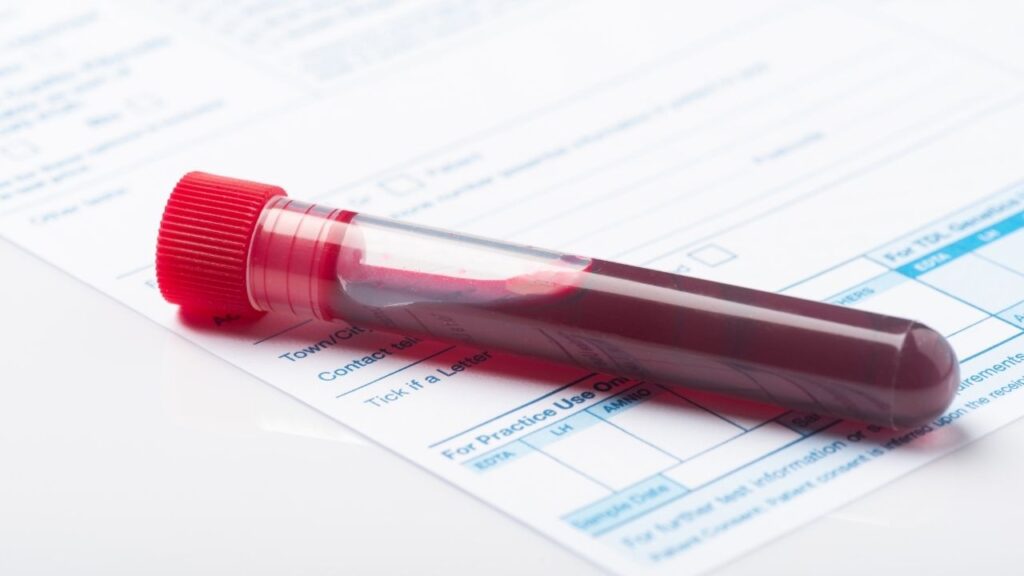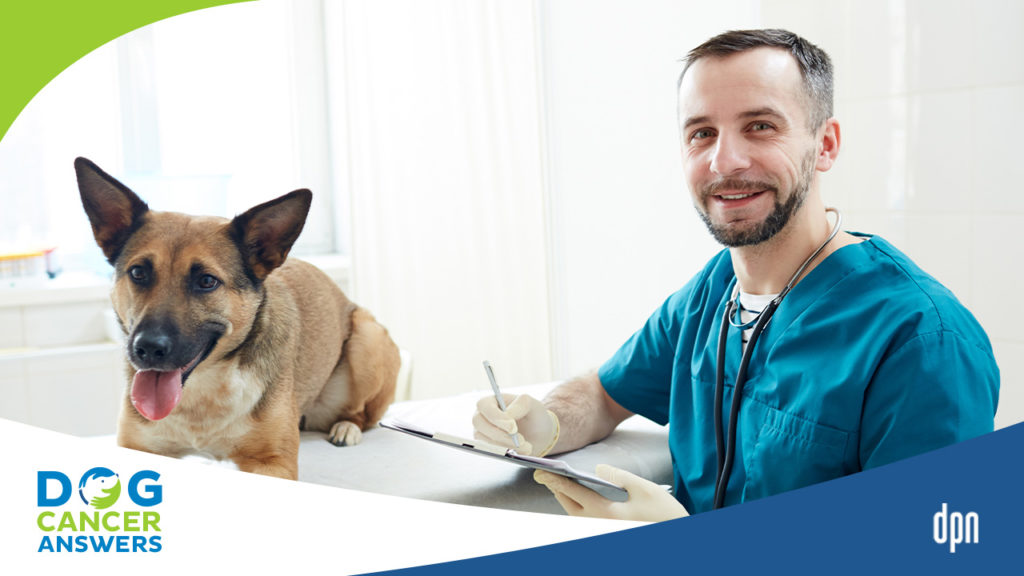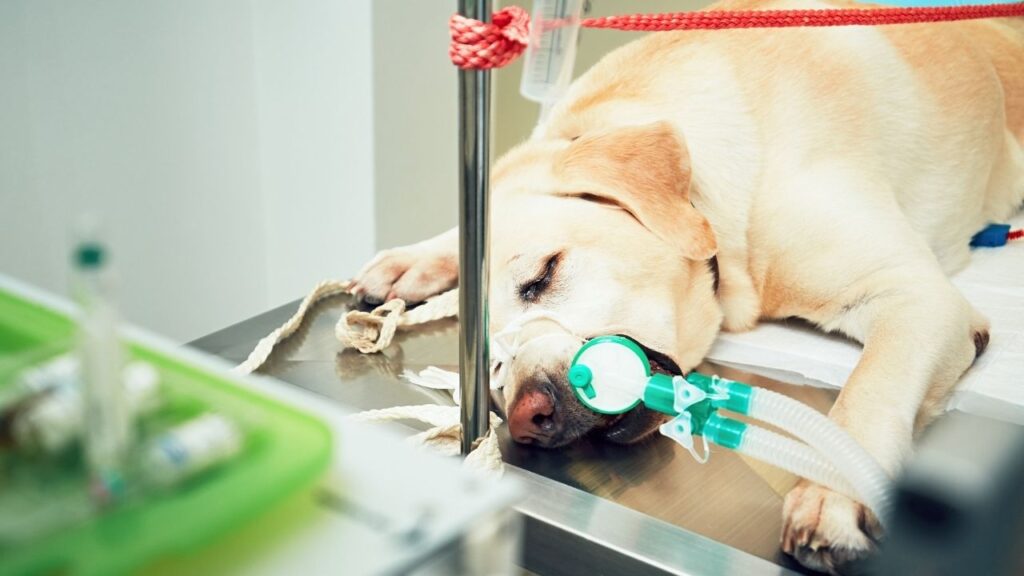The dog cancer diagnosis process can be confusing and hard to navigate alone. This becomes even more difficult when you are distracted by the swirl of emotions that occur when dealing with your dog’s cancer diagnosis. Here is a breakdown of the basic ideas and logic behind the diagnostic process.
Key Takeaways
- Cancer is diagnosed in a dog using a variety of tests to rule out other issues or test a tumor directly. Diagnostics can include bloodwork, biopsies, x-rays, ultrasound, and many others depending on the cancer at work.
- A vet determines if your dog has cancer based on the physical exam of your dog, your dog’s symptoms, and the results of appropriate tests.
- Routine bloodwork cannot detect cancer in dogs, but newer tests being developed have the potential to do so.
Why Do I Need an Official Dog Cancer Diagnosis?
You may ask yourself, isn’t cancer a diagnosis? The answer is yes, but it is a broad diagnosis. There are many different types of cancer that all behave differently.
The ultimate goal is a definitive diagnosis – which is a dog cancer diagnosis with more confidence and detail. A definitive diagnosis enables your veterinarian to guide you toward the most effective treatment options and provide more tailored information about possible outcomes so you are better prepared to deal with the future.
Some cancers are easier to diagnose than others. An examination and needle biopsy or ultrasound may be the only thing needed in some cases while others may require visits to a specialist with advanced imaging such as an MRI.
What Tests Can My Regular Vet Run?
General practice veterinarians have a variety of tools at their disposal to run diagnostic tests on your dog. Extremely small clinics may only have access to basic lab work and x-rays, but large multi-doctor hospitals may even have some of the more advanced “toys.”
Tests that can be run by most general practice vets include:
- Blood work (routine tests “in-house,” other tests sent out to a lab)
- Urinalysis
- Fecal exams
- X-rays (also potentially sending out the images for a specialist to evaluate)
- Ultrasound
- Fine needle aspiration with cytology
- Surgical biopsy and sending out samples for histopathology
A second opinion with an oncologist is the best way to get the latest treatment and diagnosis information explains Dr. David Vail in this episode of Dog Cancer Answers.
What Tests Require a Specialist?
More advanced testing may require going to a specialty hospital. Higher-tech tests often require large or expensive equipment that regular veterinary hospitals just can’t accommodate.
Tests that will likely need to be done at a specialty hospital include:
Why Did My Vet Refer Me to an Oncologist?
Most general practice veterinarians are very comfortable treating cancer that requires surgery and some commonly used chemotherapies in tablet form. General practice veterinarians do not often provide intravenous chemotherapy or radiation as they do not have the proper equipment nor the advanced oncologic training needed. Thus, you may be referred to a veterinary oncologist.
Veterinary oncologists go through an additional three years of training in JUST cancer. They have the most up-to-date knowledge of cancer treatments and the facilities to treat your pet’s cancer safely and effectively.
Cancer research moves so quickly that it is a full-time job to keep up with the most recent literature. Veterinary oncologists are an amazing, caring, and wonderful group of individuals!
Caller Janet wants to know what guidelines there are for catching dog cancer early in this episode of Dog Cancer Answers.
Why Didn’t This Test Give an Answer?
Medicine is not black and white, and no test is perfect. Unfortunately, that means that sometimes test results do not reveal an answer.
Tests are run to help guide us through a diagnostic tree. So, if a test is negative, it may still be useful as it was able to rule out a particular disease. If a test is inconclusive, it can be very frustrating, especially if it was expensive. This is equally frustrating for your medical team!
For example, when a mass is found, a fine needle aspirate (FNA) is often recommended to help identify the cell type and see if it is cancerous or not. When this is done, we are sampling with a tiny needle and grabbing just a few cells within a giant sea of cells! So sometimes, those cells are not representative of the whole (larger) picture.
Why Didn’t My Dog’s Cancer Show Up on Bloodwork?
In veterinary medicine, there are not many cancers that will show up on routine screening bloodwork. We may get clues like a high calcium level, very elevated liver enzymes, or unexplained anemia, but these are only present in a handful of cases, often with specific cancer types.
In the future, it may be more common to have more routine and affordable testing for cancer markers like they do in humans. As of now, early screening tests like NuQ and OncoK9 require a blood draw and are quite expensive. A new test, Oncotect, is less expensive and involves a simple urine catch. If it proves to catch cancer early over time, it might be an affordable screening tool that more veterinarians will start using.
Confused about dog cancer staging and grading, and not sure if the tests are worth the cost? Oncologist Brooke Britton explains the ins and outs in this episode of Dog Cancer Answers.
Why Does My Dog Need So Many Tests?
As you can see, because results are not always clear, it can take a lot of different tests to get to the correct dog cancer diagnosis. Think of the cancer hunt like a detective trying to catch a criminal. The more clues you have, the closer you get. Each test result is a clue that can point you toward the next step.
Once the diagnosis is made, more tests may be needed to make sure it is safe for your dog to have surgery or get chemotherapy.
How Long Do Test Results Take?
Waiting for test results can feel like forever. Some test turnaround times are quick – like routine bloodwork which may be back within a week or even the same day. More complex blood tests sent to specialty labs can take longer.
Biopsies have to be prepared, processed, and then read by a veterinary pathologist. This can take up to two weeks. Some biopsies need special staining which adds additional time. Needle aspirates are also read by a pathologist or cytologist and usually take about a week to come back.
Every lab can vary in turnaround time based on staffing and volume, and things have been slower since the COVID-19 pandemic. The best approach is to ask your veterinarian the expected turnaround time so you know what to expect.
Topics
Did You Find This Helpful? Share It with Your Pack!
Use the buttons to share what you learned on social media, download a PDF, print this out, or email it to your veterinarian.








